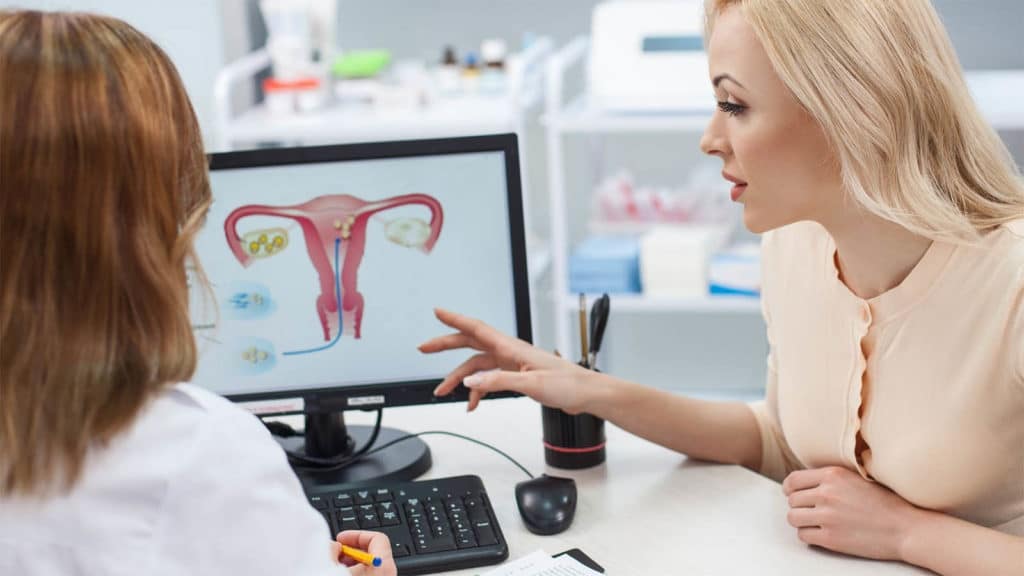The uterine fibroids or fibroids are non-cancerous tumours that form and grow in the uterus. If you have been diagnosed with a fibroid, don't panic, it is the most common benign uterine tumour in women, and it is treatable.
Here is more information on the causes, symptoms and treatment of these uterine tumours.
What are fibroids?
The myomas are smooth muscle tumours, which can develop in or around the uterus. Part of their structure is made up of muscle tissue. They rarely develop in the cervix.
Those fibroids that produce symptoms can be treated surgically, or through less invasive procedures.
Types of fibroids
There are 3 types of fibroids:
Intramural Fibroids
They are the most common, developing in the myometrium, which is the muscular layer of the uterus.
Subserosal Fibroids
These are the ones that develop on the outer wall of the uterus. As they grow they generate pressure on adjacent organs, or pain if they are large.
Submucous myomas
These are the ones that develop and contact or are inside the cavity of the uterus, the endometrium, generating abundant bleeding.
Causes of fibroids
Oestrogen can promote the growth of fibroids. During the first trimester of pregnancy, one third of fibroids increase in size, but after childbirth they usually shrink. After the menopause, fibroids usually shrink or remain stable.
Other causes of fibroids include:
Race
Studies show that fibroids are more common in African-American women.
Age
Fibroid growth is usually faster in women under 35 years of age. After the age of 45, growth tends to be slower.
Genetic factors
Several studies have found that specific genetic alterations are associated with the development of fibroids.
General health status
Obesity and high blood pressure may also play a role in the development of fibroids.

Symptoms of fibroids
Most fibroids have symptoms at some point. The most common symptom is vaginal bleeding, either irregular or heavy.
Other symptoms that may occur include anaemia, fatigue and weakness if there is heavy bleeding; a feeling of pressure or a lump in the abdomen; difficulty urinating, dribbling at the end of urination or urinary retention if the fibroid presses on the bladder; likelihood of developing urinary tract infections, pelvic pain, infertility or pregnancy complications.
They can also hinder gestation if they are inside the uterine cavity, as they hinder the implantation of the fertilised egg in the endometrium.
Treatment of fibroids
Almost a third of women with fibroids will see a doctor seeking treatment for their symptoms. Although treatments for fibroids vary from non-invasive to surgical, the choice of treatment will depend on a woman's age, or whether she wishes to have children.
The treatment of fibroids will also depend on the size, number and location of the fibroids. Most doctors agree that treatment is not necessary if the fibroids are asymptomatic.
If the woman has heavy bleeding, and does not want to undergo a hysterectomy (removal of the uterus), has several treatment options including hormonal contraception, use of intrauterine device with gestagens, antifibrinolytic, in case you do not want to have children endometrial ablation (procedure where the endometrium is destroyed with cold or heat); gonadotropin-releasing hormone agonists can make fibroids shrink in size, but once the treatment is finished the fibroids start to grow again; myomectomy: a procedure in which the fibroids are removed and the uterus is left intact, but the fibroids may grow back later.
Be sure to consult your gynaecologist if you have any of the symptoms described above. At Clínica Ginecológica Pérez-Bryan in Málaga, our team of specialists will be able to assess your case and see all the possible solutions and the most appropriate myoma treatment.

